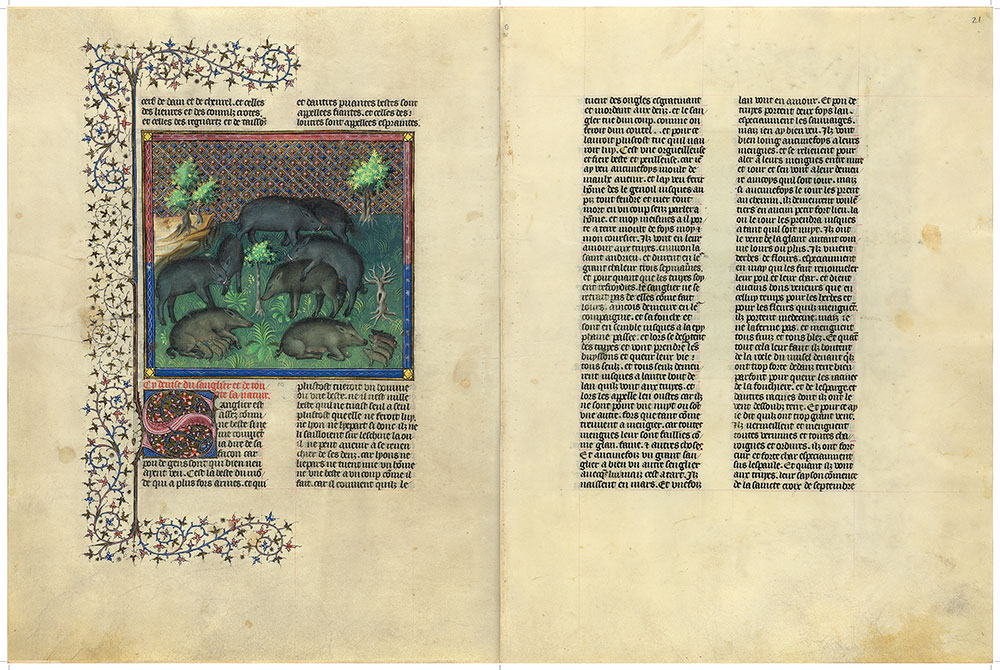
Livre de la chasse
Bequest of Clara S. Peck, 1983
The Wild Boar
The boar, to medieval man, was the polar opposite of the stag. The former was massive, ugly, ferocious, and represented evil, while the latter was elegant and timid, representing virtue. For Phoebus, the boar was the most dangerous animal in the world. Its upper tusks were used to keep the lower ones sharp and cutting. The hunting season went from Holy Cross Day (September 14), or from Michaelmas (September 30), when boars were fleshiest, to St. Andrew's Day (November 30), when they found sows for mating. The boar, like the stag, was hunted with dogs. The boar had a definite sexual element and one pair in the miniature is depicted copulating. Some hunters prized its testicles as a delicacy. Tristan's heraldic device was the boar; it played a role in Majadoc's dream regarding Tristan's seduction of Isolde, wife of King Mark. In the dream, a fearsome boar, foaming at the mouth, broke into the king's bedchamber, fouling the royal linen with its foam.
Image courtesy of Faksimile Verlag Luzern
